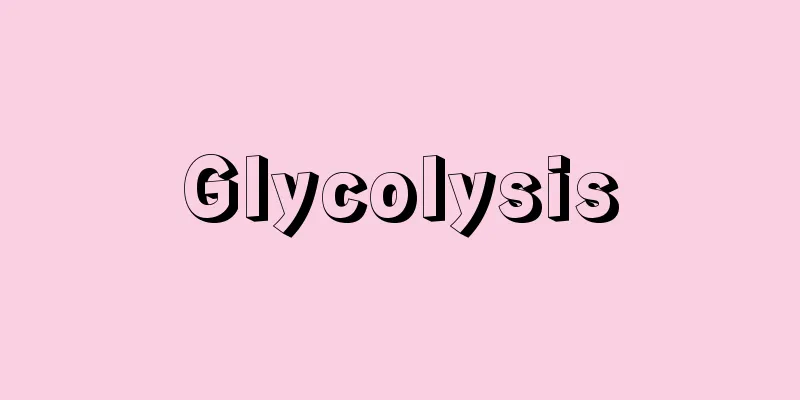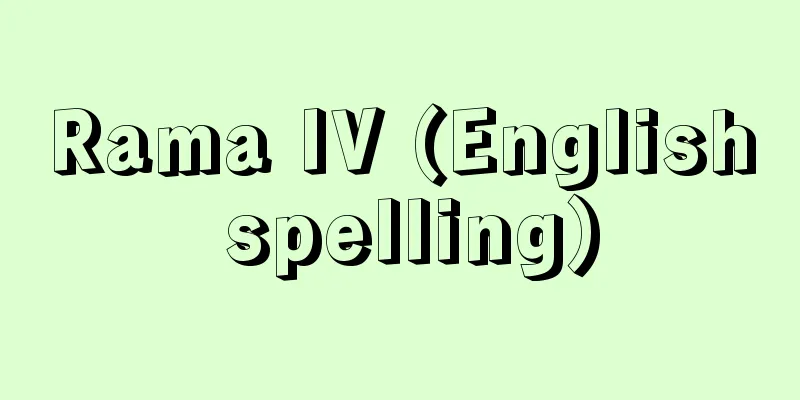Glycolysis

|
This refers to the anaerobic metabolic pathway from glucose to lactic acid that occurs in higher plants and animals, and most microorganisms. Glucose produces lactic acid via a phosphorylated intermediate in reactions 1 to 11 shown in . In a broader sense, this generally refers to the decomposition process in which sugars become pyruvic acid through this pathway. In the liver and muscles, glycogen is the substrate. In addition to glucose, fructose, galactose, and mannose are also used as monosaccharides. This is the oldest basic pathway by which organisms obtain energy from glucose, and serves as a preliminary pathway for aerobic decomposition. Under aerobic conditions, pyruvic acid enters the TCA cycle and is oxidized. The overall reaction equation is as follows: Glucose ( C6H12O6 ) 2Lactic acid ( C3H6O3 ) Glycolytic enzymes exist in the soluble fraction of the cytoplasm, and most of them have been highly purified and crystallized, and their properties have been elucidated. Glycolysis requires inorganic phosphate, magnesium ions Mg2 + and potassium ions K + , and coenzymes NAD and ADP, and is inhibited by fluoride, monoiodoacetic acid, heavy metals, etc., and the sites of their inhibition are also known. Glycolysis is divided into two steps. The first step is the start-up step (up to reaction 5) in which glucose and other sugars are phosphorylated with the consumption of ATP (adenosine triphosphate) to produce glyceraldehyde-3-phosphate. The second step involves the uptake of inorganic phosphate accompanied by the reduction of NAD, and ATP is produced via a high-energy phosphate intermediate. Two molecules of ATP are used per glucose molecule in the first step, and four molecules of ATP are produced in the second step, resulting in a net 2 ATP. The energy obtained as ATP from glycolysis is much less than that obtained from the TCA cycle, but it is important as a way to obtain energy quickly in anaerobic tissues such as muscles. Most of the reactions in the glycolytic pathway are reversible, but reactions 1, 3, and 10 are irreversible under physiological conditions. When excess lactic acid accumulates in the muscles, it is returned to the liver and glucose is synthesized again. In this case, reaction 10 proceeds via another detour, and reactions 3 and 1 proceed via a different enzyme. The synthesis of glucose by the reverse of glycolysis is called gluconeogenesis. Step 3 is catalyzed by the regulatory enzyme phosphofructokinase, and is the main rate-limiting step that determines the reaction rate of the entire glycolysis pathway. This enzyme is inhibited by ATP, citrate, and fatty acids, and promoted by AMP and ADP. This indicates that glycolysis is suppressed when there is a sufficient supply of ATP under aerobic conditions. In the 19th century, Pasteur discovered that alcoholic fermentation is suppressed in the presence of oxygen, and this phenomenon, due to its universality, attracted interest as the Pasteur effect, but it was largely explained by the existence of this regulatory enzyme. The glycolytic pathway is also indirectly regulated by hormones, which keep the amount of glucose (blood glucose) in the blood constant. Insulin, a hormone from the pancreas, promotes the conversion of glucose into glycogen and lipids, lowering blood glucose levels. Conversely, glucagon and epinephrine stop the synthesis of glycogen and promote its breakdown, raising blood glucose levels. At this time, the hormones change phosphorylase (1' in ) from an inactive form to an active form through their active substance, cyclic AMP, and turn glycogen synthase (-1') into an inactive form. [Kayoko Ikeda] "Biochemistry, by Egami Fujio (1975, Iwanami Complete Works)" ▽ "Biochemistry, Vol. 1, by A.L. Lehninger, supervised by Nakao Makoto (1977, Kyoritsu Publishing)" ▽ "Biochemistry for Paramedicals, by Irino Tsutomu et al. (1997, Sankyo Publishing)" ▽ "Fermentation Handbook, supervised by Tochikura Tatsurokuro et al., edited by Bioindustry Association Fermentation and Metabolism Research Group (2001, Kyoritsu Publishing)" [References] | | | | | | | | | | | |©Shogakukan "> Glycolysis pathway (diagram) Source: Shogakukan Encyclopedia Nipponica About Encyclopedia Nipponica Information | Legend |
|
高等動植物とほとんどの微生物で行われるグルコースから乳酸への嫌気的代謝経路をいう。グルコースはに示す1から11にわたる反応でリン酸化中間体を経て乳酸を生成する。広義には糖類がこの経路でピルビン酸となる分解過程を一般的にいう。肝臓や筋肉ではグリコーゲンが基質となる。単糖ではグルコースのほか、フルクトース、ガラクトース、マンノースも用いられる。生物がグルコースからエネルギーを得るもっとも古い起源の基本経路で、好気的な分解への予備経路となっている。好気条件下ではピルビン酸からTCA回路に入り酸化される。 全体の反応式は次式となる。 グルコース(C6H12O6)2乳酸(C3H6O3) 解糖系の酵素は細胞質の溶性画分に存在し、ほとんどが高度に精製、結晶化され、性質も明らかとなっている。解糖には無機リン酸、マグネシウムイオンMg2+とカリウムイオンK+、補酵素NADとADPなどが必要で、フッ化物、モノヨード酢酸、重金属などで阻害され、その作用箇所も知られている。 解糖系は2段階に分けられ、第1段階はグルコースや他の糖がATP(アデノシン三リン酸)を消費してリン酸化され、グリセルアルデヒド-3-リン酸となる始動段階である(反応5まで)。第2段階ではNADの還元を伴う無機リン酸の取り込みがあり、高エネルギーリン酸中間体を経てATPが生成される。第1段階でグルコース1分子当り2分子のATPを用い、第2段階で4分子のATPを生成するので、差し引き2ATPができる。解糖で得られるATPとしてのエネルギーは、TCA回路で得られるものよりずっと少ないが、筋肉のような嫌気的な組織で短時間にエネルギーを得る方法として重要である。 解糖系の反応は大部分可逆的であるが、1、3、10の反応は生理的条件では不可逆である。筋肉で過剰の乳酸が蓄積すると、乳酸は肝臓に戻されてふたたびグルコースが合成される。この際、10は他の迂回路(うかいろ)で、3、1は別の酵素で反応が進む。解糖の逆行によるグルコースの合成はグルコース新生といわれる。 3は、調節機能をもつ酵素フォスフォフルクトキナーゼで触媒され、解糖系全体の反応速度を左右する主要な律速段階である。この酵素はATP、クエン酸、脂肪酸で阻害され、AMP、ADPで促進される。これは、好気的条件下でATPの供給が十分なときには解糖系が抑制されることを示す。19世紀にパスツールが酸素の存在下でアルコール発酵が抑制されることをみいだし、その現象の普遍性からパスツール効果として興味をもたれたが、この調節酵素の存在でほぼ説明された。 解糖系はホルモンによっても間接的に調節を受け、血液中のグルコース量(血糖)が一定に保たれている。膵臓(すいぞう)のホルモンであるインスリンはグルコースのグリコーゲンや脂質への転化を促進して血糖値を低下させる。逆にグルカゴンとエピネフリンはグリコーゲンの合成を停止し、分解を促進して血糖を上昇させる。この際ホルモンは、作用物質である環状AMPを介してフォスフォリラーゼ(の1')を不活性型から活性型とし、グリコーゲン合成酵素(-1')を不活性型とする。 [池田加代子] 『江上不二夫著『生化学』(1975・岩波全書)』▽『A・L・レーニンジャー著、中尾眞監訳『生化学 上』(1977・共立出版)』▽『入野勤他著『コメディカルのための生化学』(1997・三共出版)』▽『栃倉辰六郎他監修、バイオインダストリー協会発酵と代謝研究会編『発酵ハンドブック』(2001・共立出版)』 [参照項目] | | | | | | | | | | | |©Shogakukan"> 解糖の経路〔図〕 出典 小学館 日本大百科全書(ニッポニカ)日本大百科全書(ニッポニカ)について 情報 | 凡例 |
>>: Kaitou (English spelling) xie-dou; hsieh-tou
Recommend
Dry reclamation method
…In China, the characters and images engraved on ...
Harpiosquilla raphidea (English spelling)
...It is found from the Seto Inland Sea south to ...
Malmedy - Malmedy (English spelling)
A small industrial city in the Liège province in ...
Movable weir
…Weirs built near the mouth of a river to prevent...
Hominization
Phenomena that have undergone continuous change in...
Corrosion-resistant alloy
An alloy material that can withstand use in a cor...
Fujiwara Fuyuo - Fujiwara no Fuyuo
Year of death: 23rd May 890 (14th June 890) Year o...
Fallot, É.LA (English spelling) FallotELA
…It is a type of congenital heart disease, and is...
Kainic Acid - Kainic Acid
( 2S , 3S , 4S )-2-carboxy-4-isopropenyl-3-pyrrol...
Hikayat Aceh (English spelling)
This chronicle was compiled during the reign of Su...
Burmese - Burmese (English spelling)
They call themselves Bama. They are an ethnic grou...
Annona squamosa (sugar-apple)
A semi-deciduous fruit tree of the Annonaceae fami...
Inbreeding - Kinshintouta
...Two concepts have been proposed to explain the...
IgM
《 immunoglobulin M 》⇒ immunoglobulin M Source: Abo...
Dalarna - Darana (English spelling)
A region in central Sweden. English name is Dalec...







![Hagi [city] - Hagi](/upload/images/67cc80fa4d962.webp)

